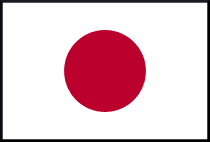The first German-Japanese government consultations are scheduled for the weekend. Chancellor Olaf Scholz will then travel to Tokyo with a handful of ministers to talk about energy security, among other things. For the German government, Japan is a partner and role model in this area. In addition, Japan is also a source of ideas on how to approach certain topics differently – for example in relation to the hope for the hydrogen economy: ammonia (NH3).
Shipowners in particular hope to have found an alternative to dirty ship fuels in the hydrogen-containing raw material. Another use is seen in Japan: as a fuel for power plants – and even as an alternative to coal.
One of the pioneers of this movement is the Japanese heavy industry group IHI. At its research center in Yokohama, the company is demonstrating a small two-megawatt turbine that runs 100 percent on hydrogen. It is the first of its kind, says Nobuhiko Kubota, head of development at the group.
Burn ammonia and coal
The group intends to present another technological breakthrough this year: a large coal-fired power station is getting a new IHI boiler that can be used to burn ammonia in addition to coal. Initially, an ammonia content of 20 percent is planned, which is then to be gradually increased. Larger conversions would only be necessary if the proportion of ammonia was very high, because then there would be less embers and the heat transport would change.
IHI hopes that this technology, which allows existing power plants to be retrofitted relatively cheaply, will become a bestseller, especially in Asia. Because many countries are currently building coal-fired power plants that will still be running in 40 or 50 years and could therefore emit carbon dioxide into the atmosphere.

Japan has always tried everything possible with electronics – and often the impossible. Every Thursday our author Martin Kölling reports on the latest trends from Japan and neighboring countries.
Japan’s government is also betting on the hydrogen derivative. In the current energy strategy, hydrogen and ammonia are to cover ten percent of Japan’s energy needs. One reason for Japan’s bet is that the stinky and toxic compound, made up of nitrogen and hydrogen, offers an interesting alternative to hydrogen as a fuel.
On the one hand, ammonia is generally cheaper than hydrogen because it is less expensive, especially in terms of transport. At atmospheric pressure, hydrogen liquefies at minus 253 degrees Celsius and is therefore transportable, ammonia already at minus 33 degrees and a relatively moderate pressure of 9 bar. On the other hand, liquid ammonia has a 70 percent higher energy density than liquid hydrogen.
Japan’s geological conditions
Tatsuya Terazawa, head of the Institute of Energy Economics, cites two other reasons: In his view, Japan’s location and geology would make it difficult to achieve a full supply of renewable energy. 90 percent of the land mass of the island kingdom consists of mountains, often with steep slopes that are hardly suitable for solar and wind power plants. Offshore wind turbines are also more difficult to set up than in Europe, because large parts of the archipelago are relatively far to the south, where the winds are generally weaker but the storms, i.e. typhoons, are stronger.
“Another reason is that, like Germany, we are very strong in the processing industry,” says the expert. “And many industries require a lot of heat that electricity isn’t very good at generating.” For this reason, a lot of natural gas is currently used, which could be replaced by ammonia.
“As these sectors are only going to be electrified, it’s probably most pragmatic to use low-carbon hydrogen or low-carbon ammonia.” It also allows Japan to import solar and wind power from other countries such as Australia. There, large power plants would provide the energy to separate hydrogen from water and then use nitrogen to convert it into ammonia.

(jl)
